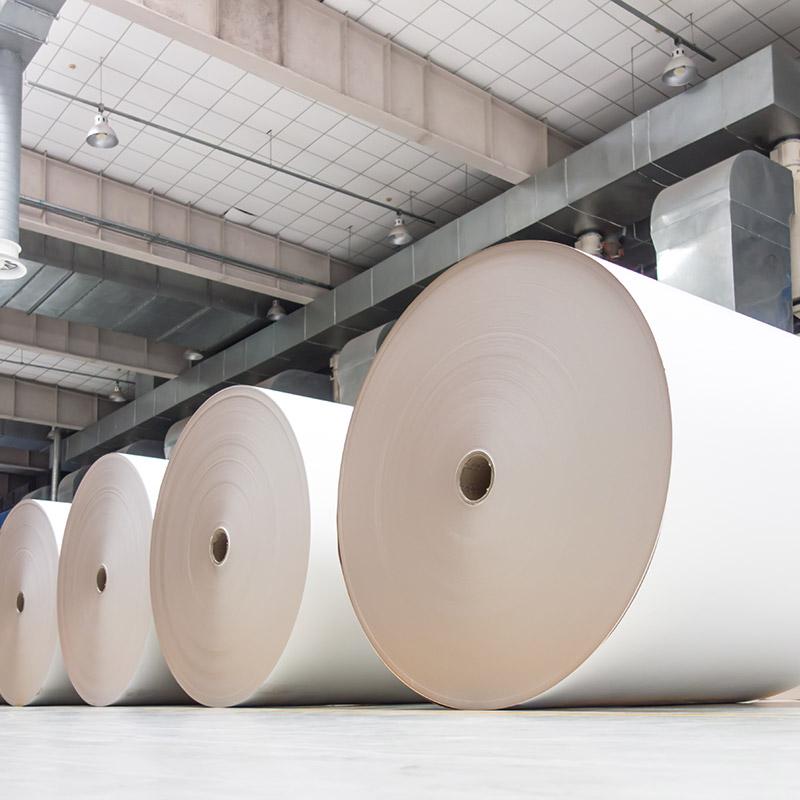
SANFOG SYSTEMS
Industrial systems for automatic humidity control
- Higher production rate
- No paper crunching
- No electrostatics in the area
- Less dust
- Less waste
- Consistent quality
- Comfortable indoor climate
- World quality SANFOG patent
SANFOG SYSTEMS
Technology

Snap evaporation
Cooling is based on the theory of evaporation with the cold water absorbing ambient heat and using this energy for evaporation. The equipment uses special nozzles for “mist” forming with water drops absorbing as much ambient heat as possible before they totally evaporate. This method is known as “snap evaporation” meaning that water vapour can reduce ambient temperature by 10-15°C without any chemicals or other harmful substances and eliminate the feeling of wetness.

High-pressure system
Their working pressure is up to 130 bar. High-pressure system consists of a filter, high-pressure pump and distribution line, and/or special equipment such as SkyMist Spray Unit, Fan Coil Unit, Elimist, Spray Nozzle Fan.

Water filtration
Using various filters for coarse dirt, softening equipment or complex reverse osmosis with membrane filters, we are able to supply water to our humidifying system ensuring minimum care for spray nozzles, which have a hole smaller than the diameter of a human hair.

Ecological technology
All SANFOG systems are considered to be GREEN TECHNOLOGY because they do not use any cooling medium so no
leakage of cooling gases depleting the ozone layer may occur. The system with the capacity of 100l/hour delivers the cooling output of 64kW consuming only 0.6kW
SANFOG SYSTEMS INDUSTRIAL HUMIDIFICATION
Use in the paper industry
Optimum humidity is an important production factor for print shops. Serious disruption to the production process can occur in offset printing, digital printing, rotary printing and in the packaging industry without additional air humidification:
Electrostatics
If paper is too dry during processing at low humidity, electrostatic charges are created. The paper sticks together and stops running smoothly through the printing press. This also applies to synthetic materials such as PVC or polypropylene.
Paper distortion
If humidity in the paper storeroom or print shop is too low, the material releases moisture into the room. This leads to unwanted changes in the dimensions of the paper. The paper then is no longer perfectly flat and cannot be processed efficiently. Doubling, register differences, wrinkling and distortion are difficulties frequently encountered as a result of low humidity.
Quality
Optimum levels of relative air humidity are assured year around with direct room air humidification. This helps to standardise the printing process, reduce spoilage, prevent machine stoppages, shorten production times and cut costs. The optimum equilibrium moisture for processing paper is between 50% and 60% of relative humidity.
Additional benefit: standardised process water
As an added benefit, the pure water produced for the air humidification can also be used as standardised process water to supply the printing presses in offset printing. Purified water protects the printing machines from corrosion, reduces operating costs and ensures consistent print quality:
- no toning and stripping, because of the constant water hardness and PH-value
- extended service life of the print cylinders and rollers
- lower share of isopropanol in the fountain solution reduces costs
SANFOG SYSTEMS INDUSTRIAL HUMIDIFICATION
Use in the paper industry
Optimum humidity is an important production factor for print shops. Serious disruption to the production process can occur in offset printing, digital printing, rotary printing and in the packaging industry without additional air humidification:
Electrostatics
If paper is too dry during processing at low humidity, electrostatic charges are created. The paper sticks together and stops running smoothly through the printing press. This also applies to synthetic materials such as PVC or polypropylene.
Paper distortion
If humidity in the paper storeroom or print shop is too low, the material releases moisture into the room. This leads to unwanted changes in the dimensions of the paper. The paper then is no longer perfectly flat and cannot be processed efficiently. Doubling, register differences, wrinkling and distortion are difficulties frequently encountered as a result of low humidity.
Quality
Optimum levels of relative air humidity are assured year around with direct room air humidification. This helps to standardise the printing process, reduce spoilage, prevent machine stoppages, shorten production times and cut costs. The optimum equilibrium moisture for processing paper is between 50% and 60% of relative humidity.
Additional benefit: standardised process water
As an added benefit, the pure water produced for the air humidification can also be used as standardised process water to supply the printing presses in offset printing. Purified water protects the printing machines from corrosion, reduces operating costs and ensures consistent print quality:
- no toning and stripping, because of the constant water hardness and PH-value
- extended service life of the print cylinders and rollers
- lower share of isopropanol in the fountain solution reduces costs


